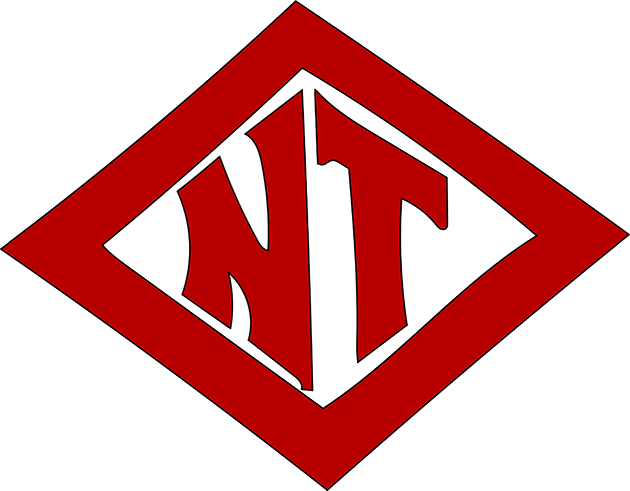Avondale / Oliver Theater (358 Oliver)
Dublin Core
Title
Avondale / Oliver Theater (358 Oliver)
Description
 Avondale Theatre as it appeared in 1924 (Dennis Reed Jr) The southwest corner of Robinson and Oliver Streets—now an empty lot—was formerly occupied by a silent film theater in 1910, an evangelical center in the 50s, and a concert hall in the 80s before being demolished.
Avondale Theatre as it appeared in 1924 (Dennis Reed Jr) The southwest corner of Robinson and Oliver Streets—now an empty lot—was formerly occupied by a silent film theater in 1910, an evangelical center in the 50s, and a concert hall in the 80s before being demolished.Oliver Theater (1910-1921)
The Oliver Theater opens its doors to the silent film-hungry public on November 3rd, 1910. It is operated by one Henry Klinger of Wheatfield Street (formerly of Buffalo). It boasts a capacity of 500 seats, modern electric lighting and ventilation, and is "sanitarily perfect." It exhibits the latest pictures, three each evening, and a Saturday matinee for a 5 cent admission.
In those more religious times, "blue laws" forbid certain kinds of work and the sale of alcohol on Sundays. Klinger battles with local authorities to permit the auditorium to be open to the public on Sundays, pointing out that other cities do. "Why, some of the churches in Lockport are showing pictures on Sundays, so I don't see why they should be considered so immoral in North Tonawanda," he says in a 1913 interview.
But Mayor B. L. Rand will not budge. Klinger takes the fight to the courts. In July of 1915 a Lockport judge rules against the mayor, opening the way to Sunday picture shows.
At some point Klinger sells "the house to Snyder and Zimmerman of Buffalo" but buys it back from them around July 1921 with a plan to "remodel the theater and increase its seating capacity" (from cinematreasures.org).
A public contest is held to rename the theater. Grocery store owner George Roggow wins the $10 prize with his romantic entry, "Avondale." He claims he read the name from the tag inside his shirt.
The Avondale Theater (1921-1955)
The newly christened theater re-opens on September 1, 1921. L. E. Bargar is manager. At his request, he is appointed as a "special police officer," serving without pay but with the authority to make arrests. In January, 1922, Wurlitzer installs a cutting-edge Hope-Jones Unit Orchestra with a $2.5K price tag. It debuts in February, the same month early silent film actor Lillian Walker (aka "Dimples") visits the theater in person, and speaks from the stage at each performance.
Apparently some vaudeville is presented at the Avondale among the films. On June 17, 1922 the NEWS reports the Great Abdiz, the Man with the Iron Jaw, and Bryson appear in an Arabian juggling act.
In October 1924, L. E. Barger resigns as manager. He is said to have been in the picture business for 22 years. In 1925, manager James. J. Kelly gets Duo-Art Films of Rochester to produce a "civic review" of the Tonawandas in pictures. Kelly becomes manager of the newly opened Riviera Theatre in 1926.
Daniel A. North is a longtime owner and operator, with a two-year absence between 1936 and 1938. The Avondale is still showing pictures as late as 1955, but is put up for sale in 1956.
Evangelistic Center of the Tonawandas (1956-1979)
In 1956, the building is purchased by Italian Pentecostals at the Christian Tabernacle who have outgrown their modest church on 195 Schenck Street, and have been renting the Avondale. After extensive remodeling, the old theater is renamed the Assembly of God Evangelistic Center of the Tonawandas. Pastor Cooper's parsonage was at 11 16th Avenue until 1960.
The first services are held on November 4, 1956. It appears to have been a lively era, as scores if not hundreds of touring speakers and religious musical acts appear in ads in the News over the following two decades.
In 1979, the Abundant Life Assembly of God sell the building and move to new quarters at 1001 East Robinson in North Tonawanda. They owned the land since 1967, and have tent revivals there. In 2009 Abundant Life is closed "because of a dwindling congregation."
Final years
By December 1979 the "Oliver Auction House" is doing business at that address.
The theater enjoys a final act in the mid 1980s as the "Avondale Ballroom," featuring live musical performances. It opens in April 1985, and is run by Dennis Lasky (who also conducted the auction house operation).
The theater is razed in the late 1980s.
Items
Would open Sunday show, Oliver Theater will make fight in courts, article (Tonawanda News, 1913-12-12).jpg

Avondale manager Daniel North showing improvement after severe burns, article (Tonawanda News, 1936-01-13).jpg

21 year-old evangelist John D. Occhipinti, former professional accordionist and band leader, ad (Tonawanda News, 1961-02-14).jpg

Yes, he's on Twitter and YouTube


































